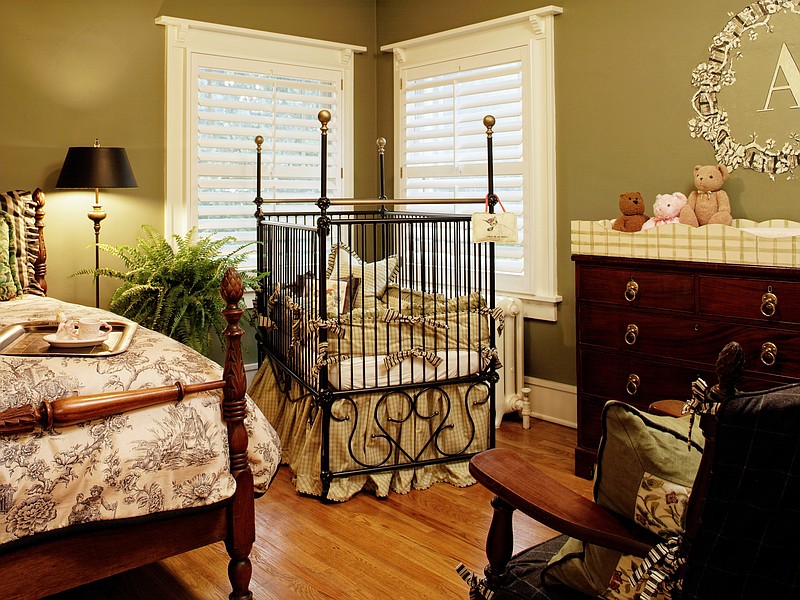Micah is here today. I like Micah. Micah has no idea how much I like him or how long I have been waiting for him. Micah is installing estate shutters in my master bedroom. I have been hankering for this home improvement for 32 months, 16 days and five hours.
Ever since my husband and I moved into our Happier Yellow House and made our To-Do List, estate shutters in the master have been on it. The house already had handsome white estate shutters on all the front windows, but the prior owners took their foot off the gas in the back of the house, where they hung cheaper, white wood blinds.
The first time I tried to open them, the wand came off in my hand. The blinds never worked again. We've lived like this ever since.
But every time the estate shutters crept to the top of the hit list, another budget biter smacked it down, and we'd suddenly need to pay for tires, or traffic tickets, or taxes.
Until now. Finally.
"So, Micah," I am in a chair nearby watching the shutters go up, "how many installations do you do a day?"
"Four or five," he says.
"Is everyone as excited as I am?"
"Most customers like them."
"They are everywhere for a reason," I say.
He is silent. Micah is not prone to overstatement. Plus he has a job to do.
I try not to be a nuisance, which is hard for me.
"Classic, sophisticated, timeless, this window treatment is never a mistake," said interior designer Karlie Adams, of Denver, who does share my enthusiasm when I tell her about my new shutters. "They can be modern, contemporary or traditional. They work everywhere."
Well, almost. They can be a bit awkward on sliding-glass doors, she conceded.
Apparently, the ancient Greeks also shared my appreciation. History shows these wide-louver shutters were prevalent throughout their subdivisions way back in 800 BC, that is before cars. The classic window coverings then caught on in Renaissance Europe and eventually migrated to the American South, where their good looks and sun-blocking ability made them a staple on large estates.

Wide slats, usually three-and-a-half to four inches wide, set them apart from other types of shutters. Their larger louvers result in fewer slats per vertical foot, which means they can let in more light, and, if windows are open, more air.
Air is good, because the cost (ours were $22 a square foot, including installation cough) can make you hyperventilate.
"They used to be a lot more expensive," said Nathan Swartz, who owns Shutter Professionals, in Orlando, Fla., and who has worked in the business 22 years. "When the import market opened up 20 years ago, the cost dropped by almost half."
I guess that's some consolation.
"What once was a luxury for the top 10% of homeowners, suddenly became accessible," he said.
Accessible is relative.
The estate shutters I ordered are made of polymer reinforced with aluminum to match the other shutters in the house. Polymer is durable, water resistant, fire retardant, bug proof, and consistent, unlike wood, Swartz tells me, adding that polymer shutters outsell wood ones five to one.
The benefit of wood shutters is that you can stain or paint them any color. Swartz advises consumers to avoid hollow polyvinyl shutters because over time, the louvers sag or "smile."
If you are thinking of adding these classic window treatments to your home, first, shop and compare prices and samples. (I got two quotes that were $800 apart.) Then consider these six reasons to love them:
Looks. At home in almost every interior, estate shutters are an architectural element that can stand alone. While you can put drapery alongside them, estate shutters look finished without any more window dressing.
Versatility. Neither formal nor informal, estate shutters work throughout the house, from living rooms to laundry rooms, and every room in between.
Control. Whether you want to control privacy, light, or airflow, they let you do all that, while helping keep your home cool, and saving energy.
Color choice. White (which reflects sun and heat) is by far the top seller, accounting for more than 90% of the shutters Swartz' company sells. Wood stain shutters are second, followed by those painted a custom color.
Longevity. "People like estate shutters because they never have to cover their windows again," Swartz said. Other types of coverings break, fade or wear out, but good estate shutters have no mechanical parts to break, and no cords, which can be a risk for children.
Resale value. Real estate ads often boast that a home has estate shutters, although they never brag about home's drapes or blinds. That's because home sellers know this: No buyer walks into a home with estate shutters and says, "Ugg, those have to go.'"
Though the company I ordered from advertised two-to-four weeks delivery, mine took 11 weeks. But I had already waited this long.
And now Micah's here. I like Micah.
Syndicated columnist Marni Jameson is the author of five home and lifestyle books, including "Downsizing the Family Home – What to Save, What to Let Go" and "Downsizing the Blended Home – When Two Households Become One."
